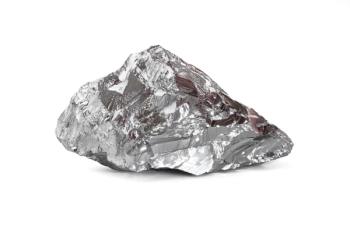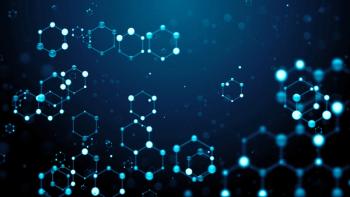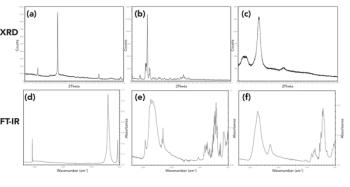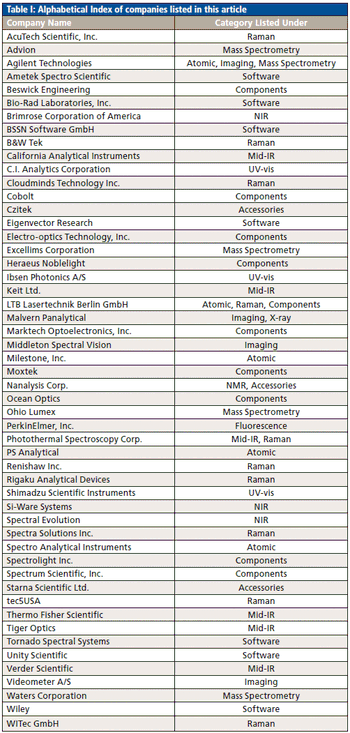
Accurate determination of the elemental composition of nickel-based alloys is essential, given their use in high-performance equipment. This XRF technique enables rapid and nondestructive detection, as an alternative to existing approaches.


Accurate determination of the elemental composition of nickel-based alloys is essential, given their use in high-performance equipment. This XRF technique enables rapid and nondestructive detection, as an alternative to existing approaches.

In these studies, wavelength dispersive X-ray fluorescence (WDXRF) was used to examine differences in the elemental composition of agricultural samples, comparing healthy and diseased samples of okra, papaya, and rice. Both the mineral nutrient profiles (macro and micronutrients) and toxic metals were examined, revealing common patterns.

Lamellar structures, which are common in many polymeric materials and biological tissues, can diffract X-rays and give rise to reflections at small scattering angles. Analysis of these scattering features can be used investigate the deformation of lamellar structures at the microstructural length.

In X-ray fluorescence (XRF) analysis, physical traceability chains are used to quantify the absolute elemental content in a sample. The physical traceability chain relies on absolute knowledge of the X-ray spectral distribution used for the excitation of the instrument and is currently used at synchrotron radiation facilities. Here, we discuss the transfer of the physical traceability chain to laboratory-based X-ray sources, which are often polychromatic, with the view to generate wider application of quantitative XRF analysis.

In the agrifood sector, soil sampling and analysis is a prerequisite for accurate fertilizer management and to monitor the accumulation of heavy metals in soils. In this study, energy dispersive X-ray fluorescence (EDXRF) was used to analyze soils with variable textures (clay and sandy) and the percent recovery of elements was compared, as a measure of accuracy.

As this study demonstrates, energy-dispersive X-ray fluorescence (EDXRF) and multivariate statistical analysis can be used to distinguish different classes of historical artifacts, such as ancient pottery—revealing insights about theirs origin and uses.

Here, a series of developing methods is presented for locating and analyzing deeply buried late Pleistocene archaeological sites, which includes the initial investigation of the geomorphology of a potential archaeological site with a suite of analytical geochemical techniques.

Phosphogypsum can be used as an intermediary material to produce cement clinker. To monitor the quality of phosphogypsum cement, a novel molecular layer deposition X-ray fluorescence (XRF) analysis method using a glass frit was developed.

In our annual presentation of trends in X-ray analysis, experts in the field provide updates on recent developments in X-ray analysis, focusing on the technique and relevant applications.

L. Robert Baker is an associate professor at The Ohio State University in the Department of Chemistry & Biochemistry. His research focuses on X-ray spectroscopy, nonlinear and time-resolved spectroscopy, the chemistry of surfaces and interface science, and energy conversion and catalysis—work that may lead to better solar energy conversion materials. He is the winner of the 2021 Emerging Leader in Atomic Spectroscopy Award, which is presented by Spectroscopy magazine. This annual award, begun in 2017, recognizes the achievements and aspirations of a talented young atomic spectroscopist, selected by an independent scientific committee.

Perovskites are known to be useful for fabrication of solar cells, and their crystalline structure plays an important role in their electronic properties. Here, we show how Raman analysis is able to confirm the presence of the required crystalline phase for solar cell production.


Raman spectroscopy is extremely useful for characterizing crystalline materials.

This approach provides traceable and reliable quantitative elemental analysis of airborne particles for on-site environmental measurement with portable instrumentation.

Here, we compare XRD and FT-IR for analysis of suspect counterfeit pharmaceuticals to determine how the techniques can be used in a complementary fashion.

Portable spectroscopic instruments have not had significant visibility within the scientific community compared with, for instance, the current generation of high-performance laboratory mass spectrometers.

Forensic traces are physical remnants of past events that provide critical information for criminal and civil investigations and adjudications. The scientific examination of traces is an incredibly valuable tool for forensic investigations, because the skilled interpretation of traces yields factual answers to a range of pertinent questions.

The increasing demand for secondary electrochemical storage devices requires well characterized and working battery systems.

Click the title above to open the Spectroscopy November 2019 Supplement, X-Ray Spectroscopy Methods & Applications in an interactive PDF format.

EDXRF offers potential advantages over ICP-OES for elemental analysis in agriculture. Karen Daly and Anna Fenelon of the Agriculture and Food Development Authority of Ireland spoke to us about their work investigating agricultural applications of this technique.

The accumulation of heavy and toxic elements in gallstones and kidney stones can be studied using WDXRF spectroscopy. Here, Vivek K. Singh of Shri Mata Vaishno Devi University in India talks about his work using this technique to understand the formation and content of these stones in the body.

Total-reflection X-Ray fluorescence analysis (TXRF) and grazing-incidence XRF (GIXRF) may be applied for surface and bulk trace element analysis of thin-layered systems. Burkhard Beckhoff of the Physikalisch-Technische Bundesanstalt (PTB) in Germany spoke to us about his recent work in this field.

Our annual review of products introduced at Pittcon or during the previous year

Serial femtosecond crystallography is a promising new technique for protein structure determination, where a liquid stream containing protein crystals is intersected with a high-intensity X-ray free electron laser beam that is 109 times brighter than traditional synchrotron X-ray sources. We were recently able to interview Prof. Alexandra Ros, a FACSS Innovation Award winner from the 2018 SciX conference regarding her research work on this subject.

To test the accuracy of residual stress measurements made with portable X-ray devices, measured normal and shear stresses were compared with the applied (true) values for accuracy assessment. From those results, practical measurement and analysis protocols for precise and accurate stress measurements are proposed.